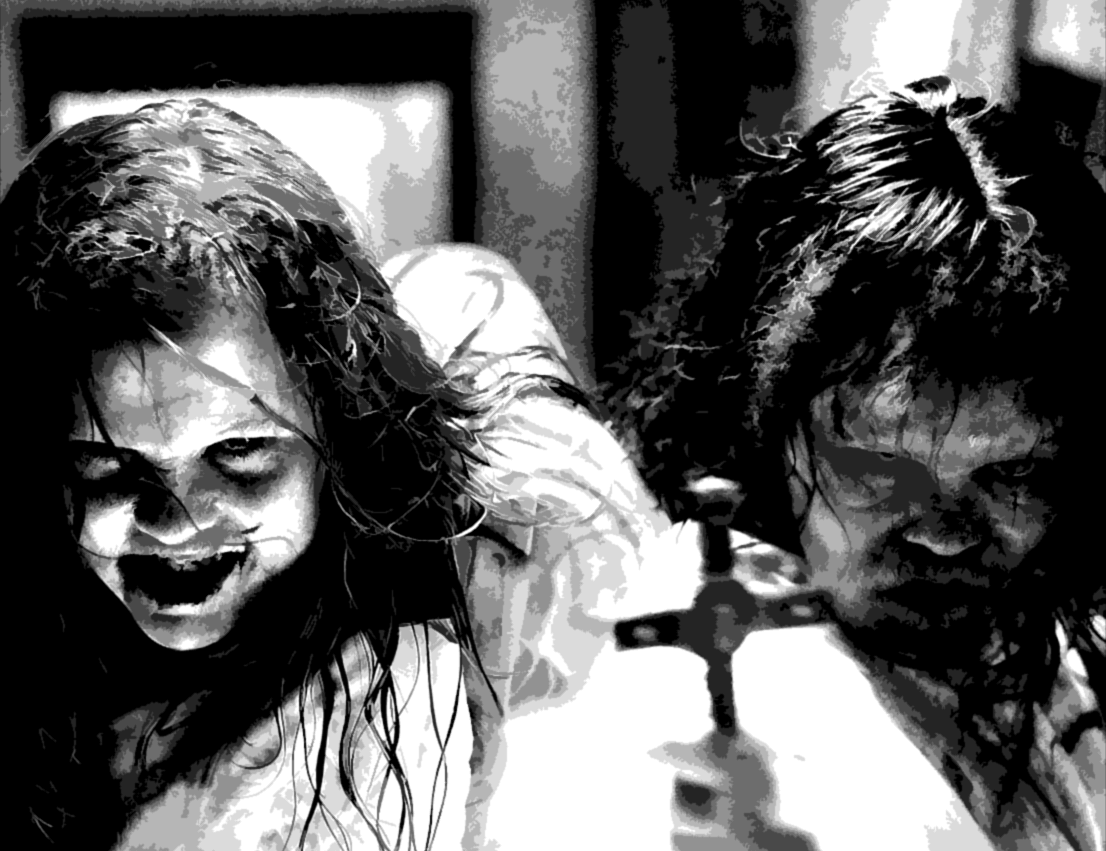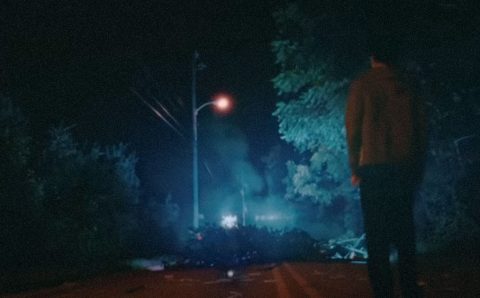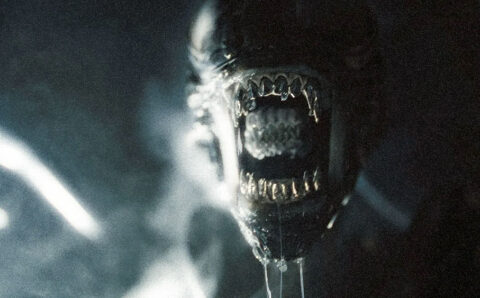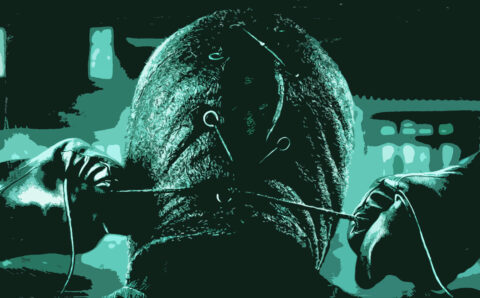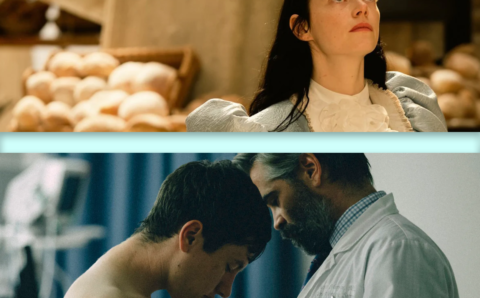
In 1983, Australian astrophysicist Brandon Carter first advanced his “Doomsday Argument,” which has since earned a recurring place in message boards and memedom. Carter reasons that where you are in the span of all human life to be lived before and after you is dead center. Anything else is less likely by fractions. Like an inverted bell curve, the theory traces the timeline of human origins to plot on the other side an equidistant doomsday and casualty count, that ultimate point of consequence when the whole human enterprise ceases.
The enterprise of The Exorcist, one of the greatest progenitors of film history, is as singular as Adam — and there have never been more alive who have seen it than right now. If you believe the crowd, its 2023 sequel The Exorcist: Believer is officially the start of the down curve, but don’t be so sure.
Director William Friedkin’s original thrives still on underestimation. VHS and DVD rentals gave the movie a clean curve “up.” Behind a bright blue and yellow storefront, customers reasoned, how unnerving could a rental be?
In the media, Hollywood funland of now, expectation is like a possessed neck: twisted, and made pointless. Spoiled by a declining golden age of television and streaming accessibility, we expect like we deserve everything but will get nothing.
How many hallowed franchises have we seen buckle on the big screen? Star Wars; Jurassic Park; Indiana Jones; in horror, well before David Gordon Green’s, Halloween, The Conjuring, and if you caught its underperforming prequel half-siblings, The Exorcist. While the first could boast that it’s so faithfully based on a true story you could visit the actual “Exorcist house” in Georgetown, the recent efforts just assembled as silly.
And so we marched this summer to see director David Gordon Green’s The Exorcist: Believer as if there were little chance a new masterpiece may await, dutifully confirming as astute cultural critics. Skeptical, we looked for the cold, collective thrill of, well, believability. For a moment, it looked like we might get it, but Green and Blumhouse Studios buckled under expectation with a third act that plays especially fake and familiar for a big screen blockbuster.
Those expectations may not translate to the modern blue and yellow Blockbuster accessible by remote. Believer is now streaming on Peacock, and latecomers may lose sleep wondering whether the reportedly bored audience exit-polled at theaters saw the same movie they did.
Green quickly calls into existence the same feeling Friedkin once mastered when translating author William Peter Blatty’s original novel, including its mystifying first chapter: that what’s coming isn’t new, but ancient and just now unlocked as part of an intergenerational, spiritual war.
The cue angles a run of perfect symmetry for Believer, in which Green masters the syntax of the original without sacrificing his own vision. Abrupt omens earn a believable rising action, and the resulting feeling is one of undeniable powerlessness.
The Exorcist’s unraveling rumbles the same. Our hero priest Father Karras confesses over beer, he may have lost his faith. Freidkin cuts to a frantic Chris O’Neil attempting to wrangle her family. Flashes of demons layer against the weeping and suffocating sound of Karras’ apnea.
Green textures his film with the chaos of a construction site digging into Earth, unwelcome, like a hammer against rock in Friedkin’s Egypt. We glimpse a family unable to manage a devil child. Quick pacing turns an unremarkable school day into potential for sinister slip.
Everyone and everything is unwell; it’s a drowned existence. Even when missing children surface, the tone is one of panic — the yell of them having been found bleeds into a car horn.
Leslie Odom Jr. is devastating in Believer as the father of a daughter possessed. Though a star, he plays his part plainly. Remaining ordinary and unassuming, as his character attempts, protects no one in this world, threats feeding off practiced calm. The audience proxy has neither secular recourse nor spiritual salvation.
The right casting for the two afflicted girls is at the heart of the success Believer does enjoy, and so are the right sound design and practical effects. In the final cut, avoiding the overused stereo effect of a pitch-shifted, doubler demon voice, Green, as Friedkin did, instead opted for an anachronistic ADR dub with different, older voice actors. The effect is still otherworldly, something dangerously “off.”
Believer‘s makeup department spent its days rendering inhuman protrusions onto the heads of the possessed girls, tossing hair for the right disheveling. Green directs the actors to lap up faith like dehydrated hounds. Their vapid stares craft the same cruel cynicism that first surfaced in 1973.
Possession horror became its own genre because of the effectiveness of Friedkin’s original choices, and the lessons derived have kept hearts racing in genre bests like The Evil Dead franchise, the precise Exorcist III, and later The Conjuring and Insidious in the James Wan-led resurrection.
But what Green does in Believer‘s climax is like making a copy of a copy of a copy: he draws misattributed inspiration from the films that based their somewhat diluted grit on the original, rather than from the original itself. If we infer from Believer’s inevitable exorcism scene itself what the filmmaker values, a priest would forgive us for assuming it’s cheap levitation, tilted heads, and loud Bible readings from faithful adults.
Though all present in the original movie, those blood-red herrings are not what made their scenes work. It was the hollow silence and dead air under Reagan as she lifted; the guttural fidgeting from Linda Blair, as if she were trying to loose a leash; Max Von Sydow’s impenetrable sincerity.
The Exorcist‘s lasting frame, when bursting with novelty as it firstly does in Believer still, has just as much unnerving power as it always did though, and there remains something hyperreal that capably, weightlessly, and unceremoniously levitates us from every presumption we once thought sufficient to ground us. Couches may very well be the unassuming comfort to send us back in time and rethink this Doomsday curve entirely.
In The Exorcist director’s cut, which includes the now infamous spider-walk scene, Friedkin tracks thumps of inhuman speed when we see Chris’ reaction, she realizing it is her once-human daughter making the evil rhythm. Ari Aster’s Hereditary features the same trick when a character beats her head against an attic door. These are the moments where horror glimpses through our humanhood into something less human but more allowing of all impossible or unimagined phenomena. Believer, even if it delivers inconsistently, is among the rare films that attempts the same. When cynicism is our drug of choice, we would do well to applaud, and eventually expect the effort.
Ryan Derenberger is a freelance journalist and editor, a Journalism and AP Language teacher at Whitman HS in Bethesda, MD, and the founder of 'The Idea Sift.' He also serves on the board of directors for student journalism nonprofit 'Kidizenship.'

